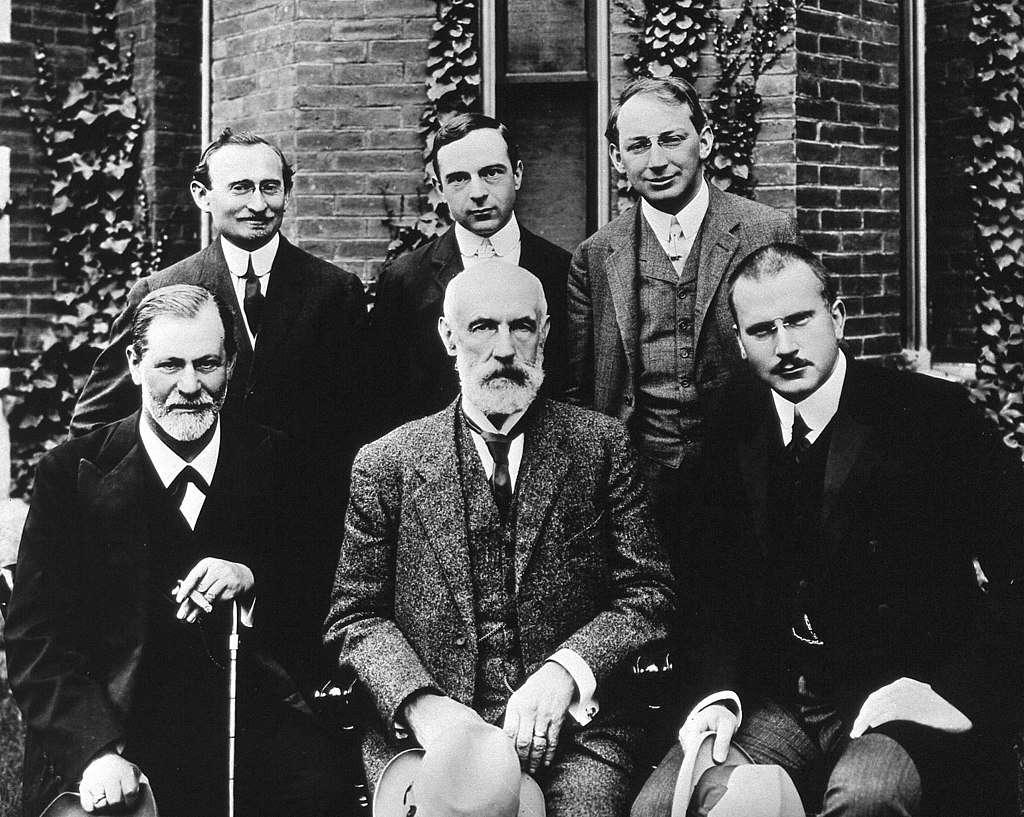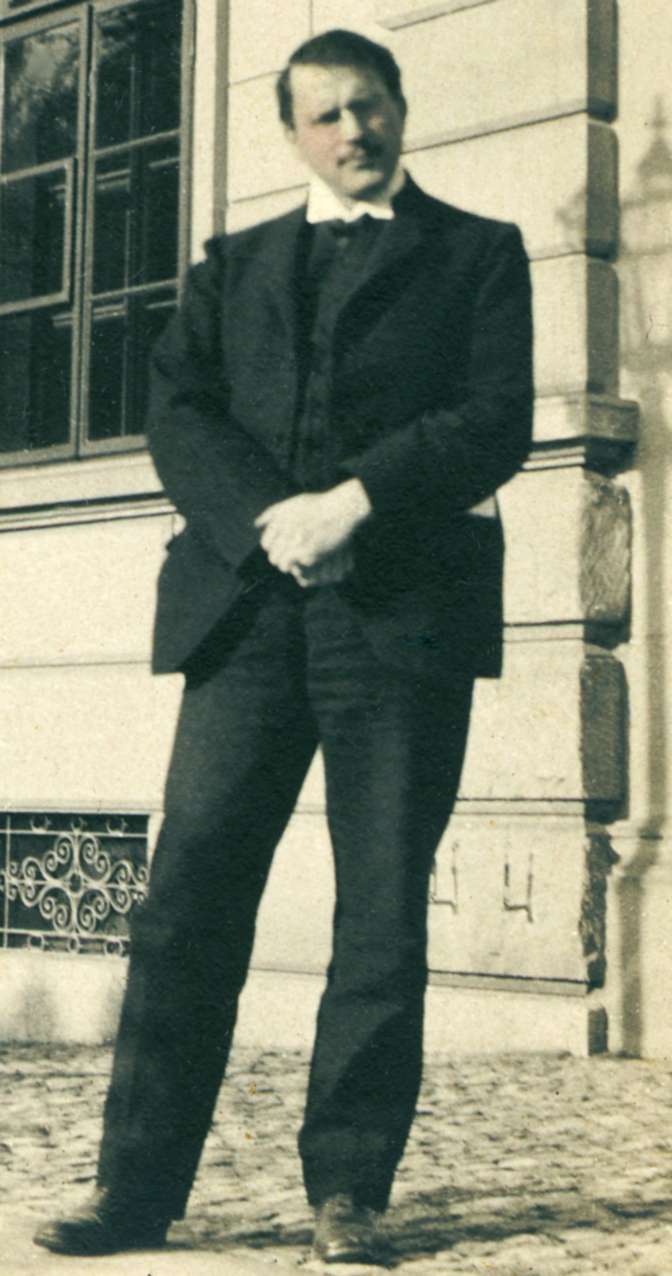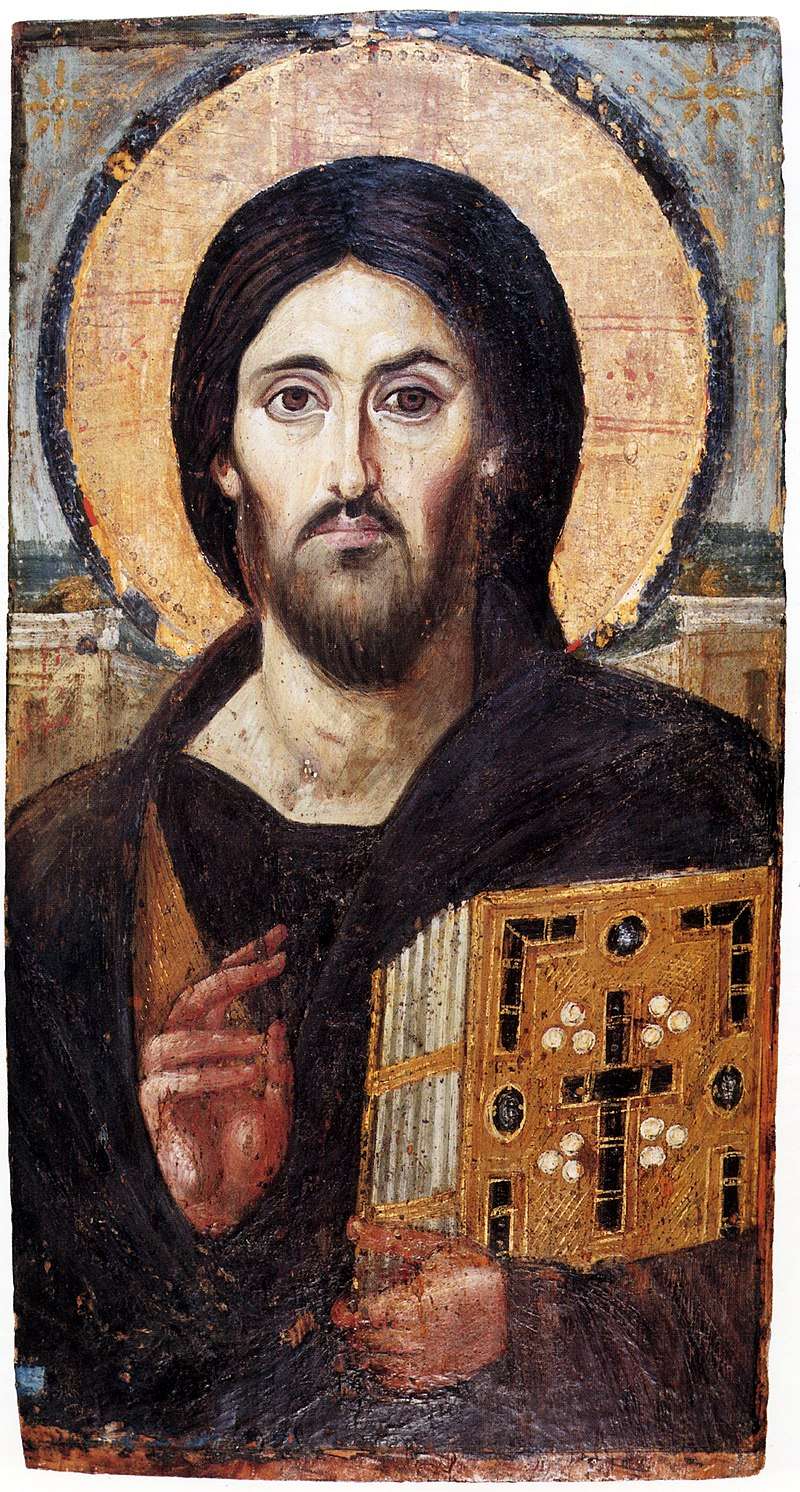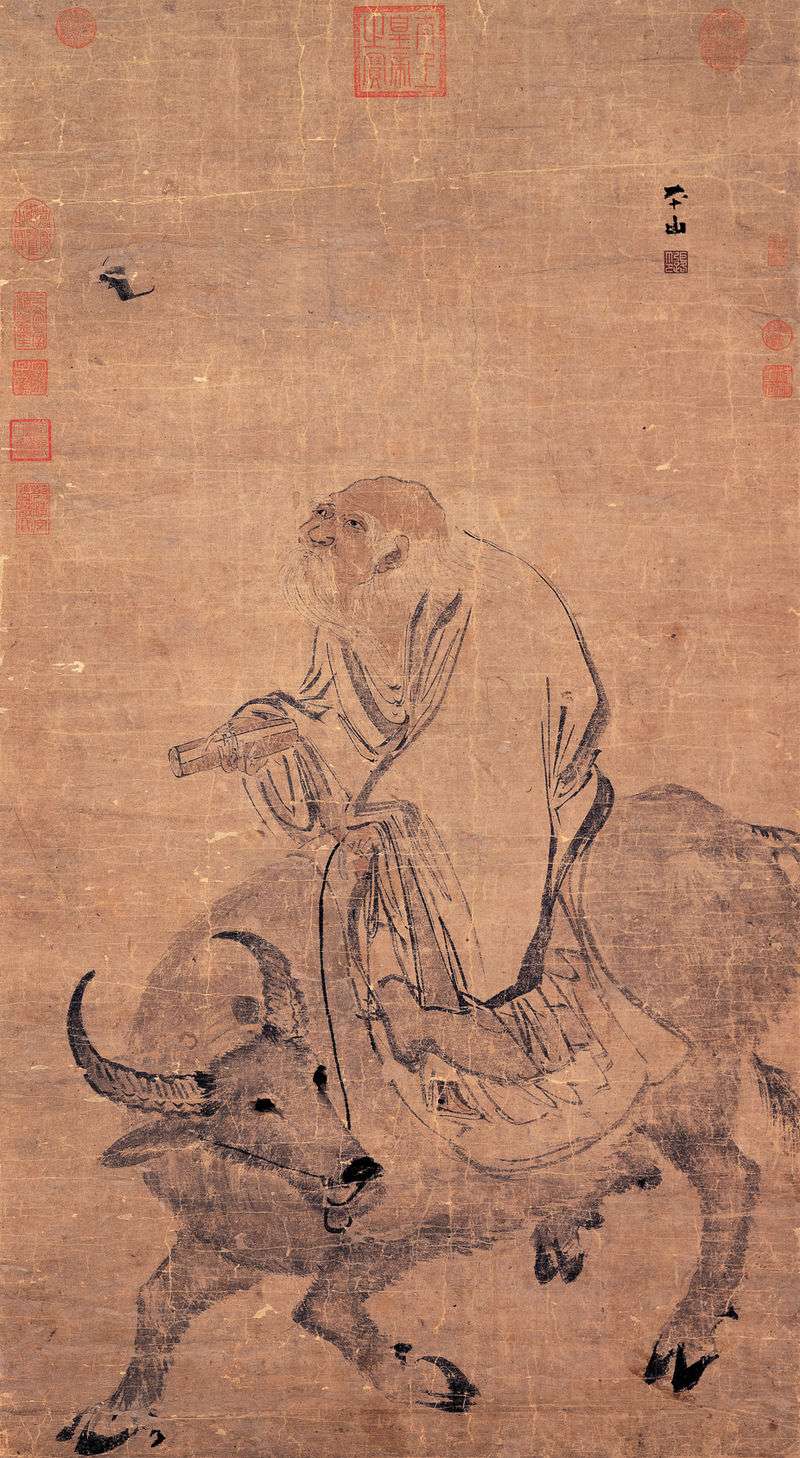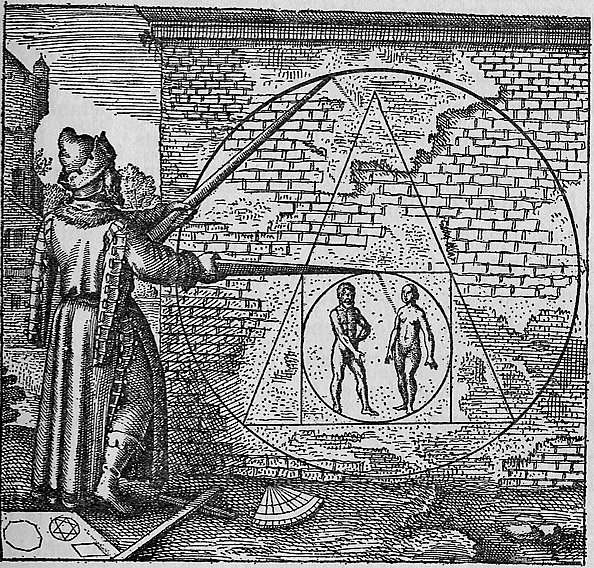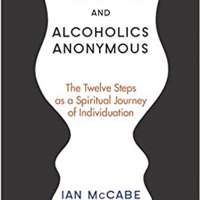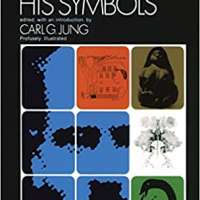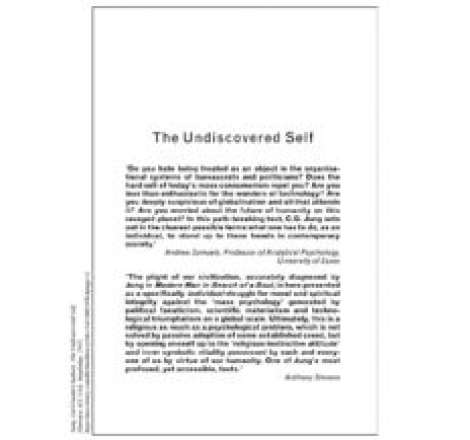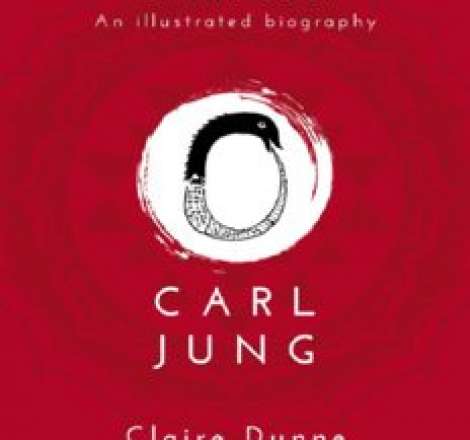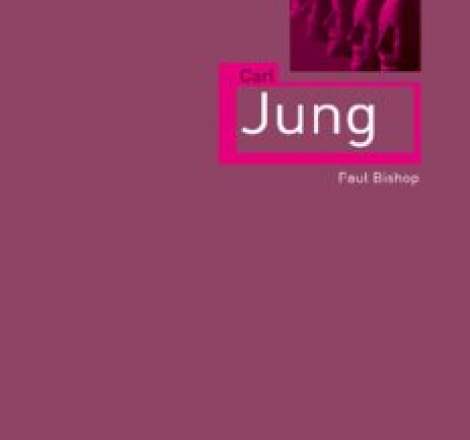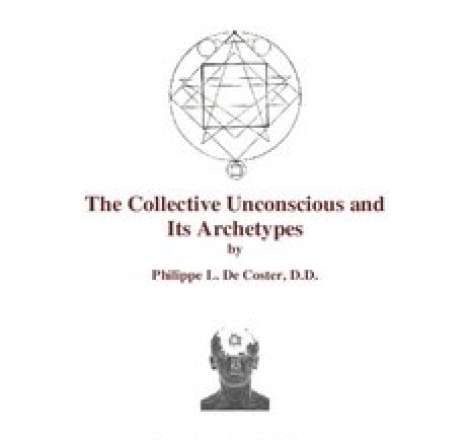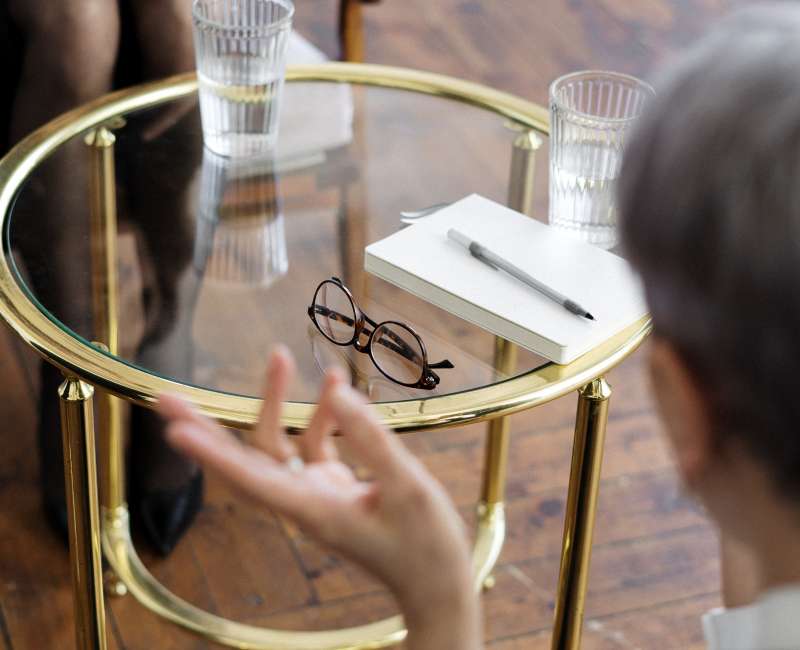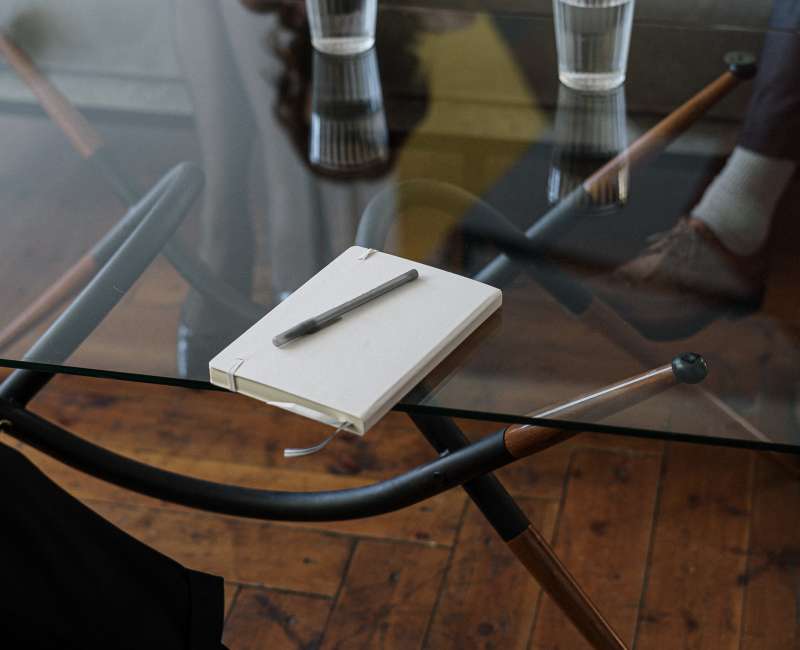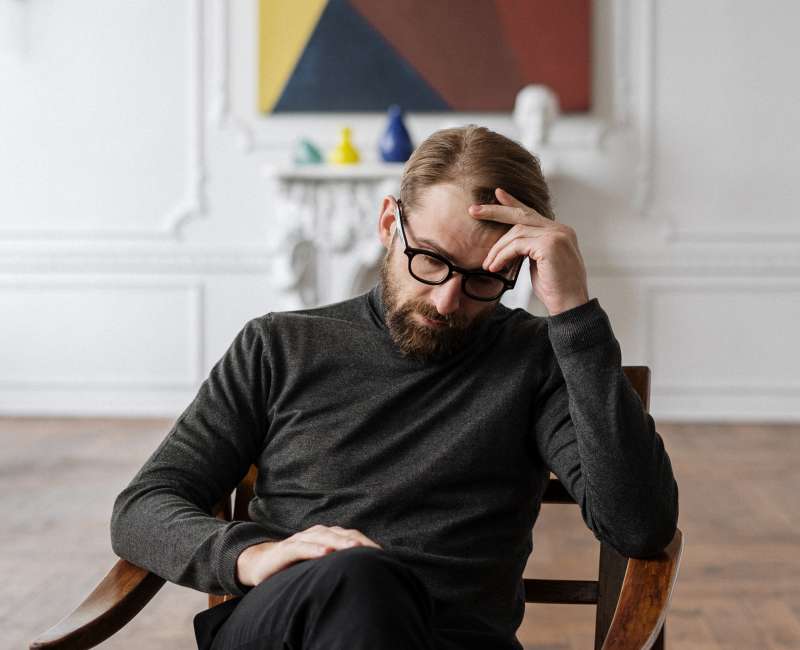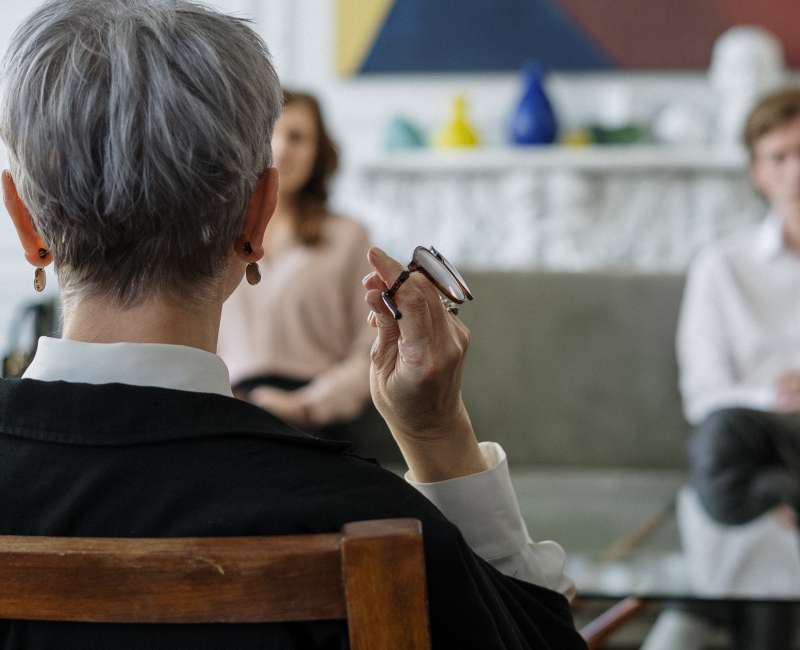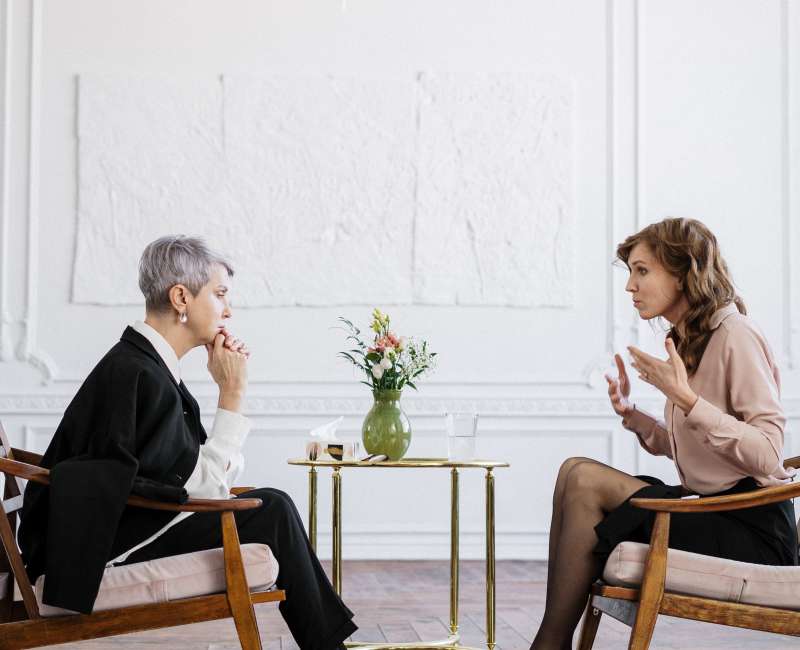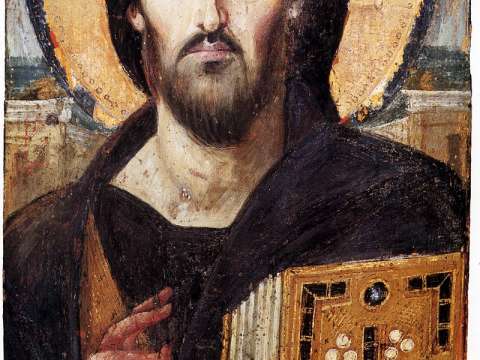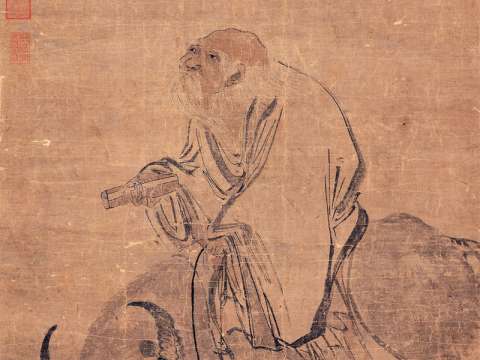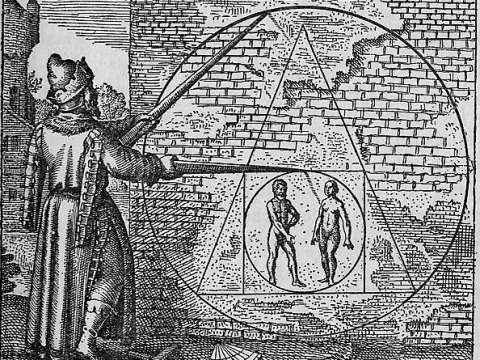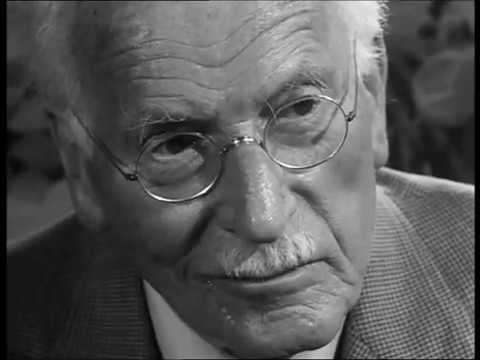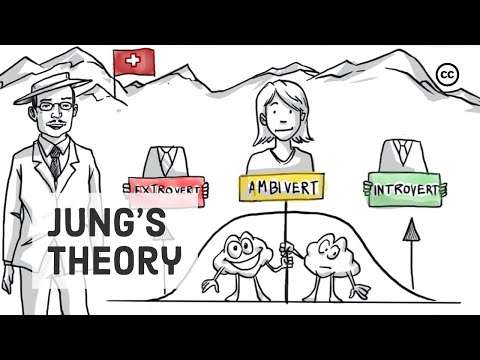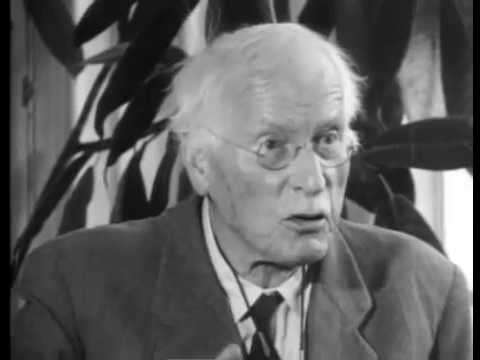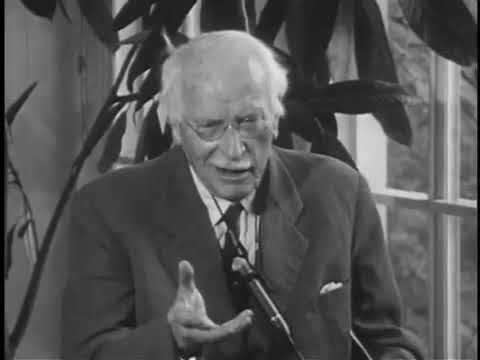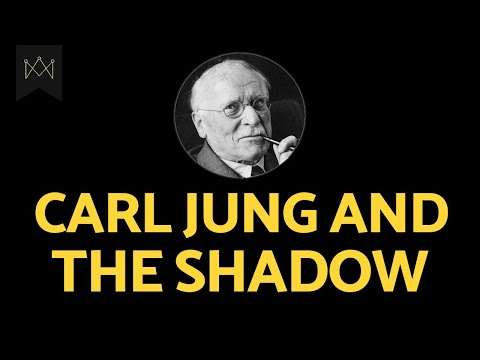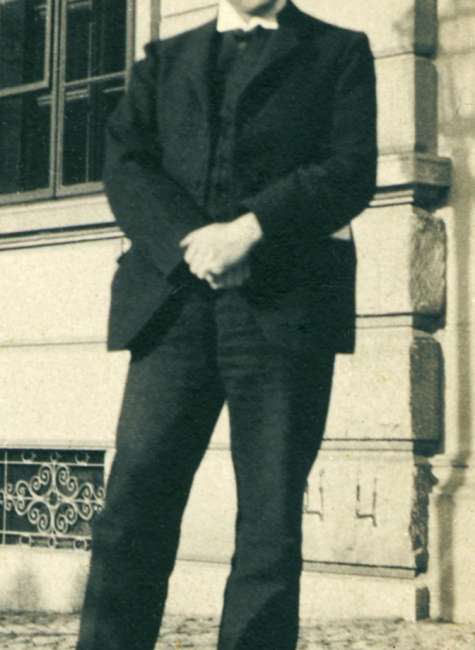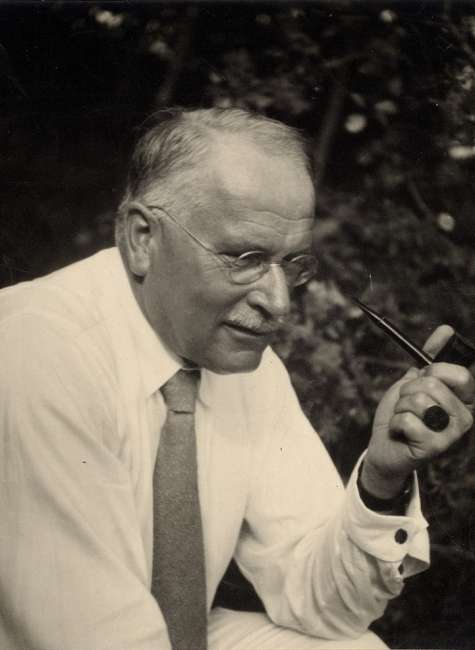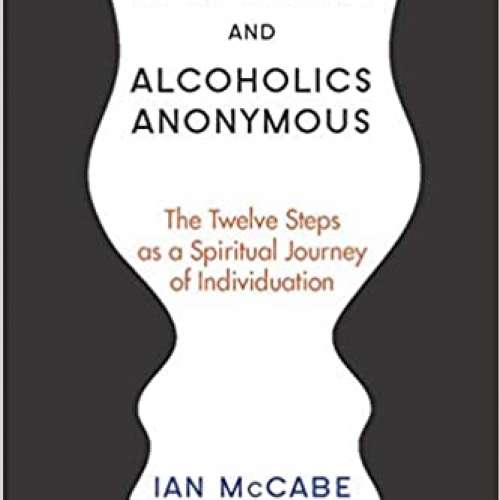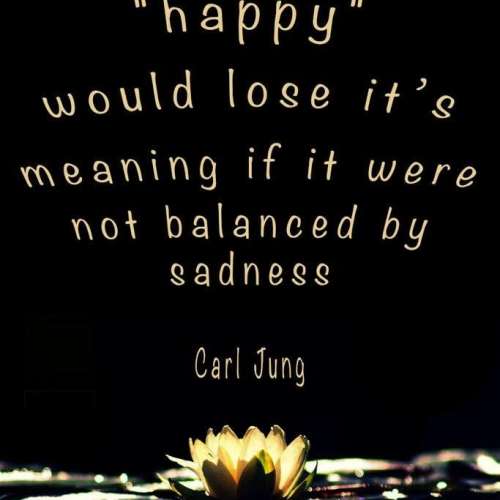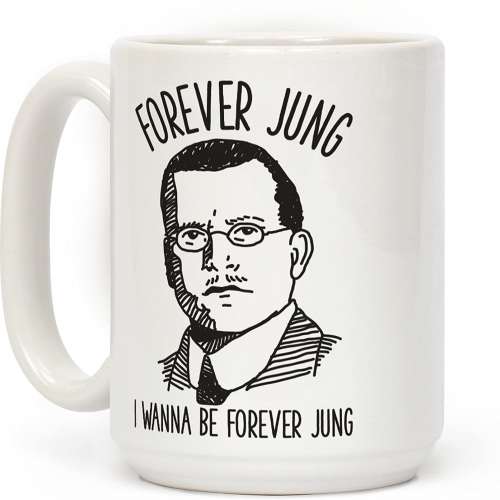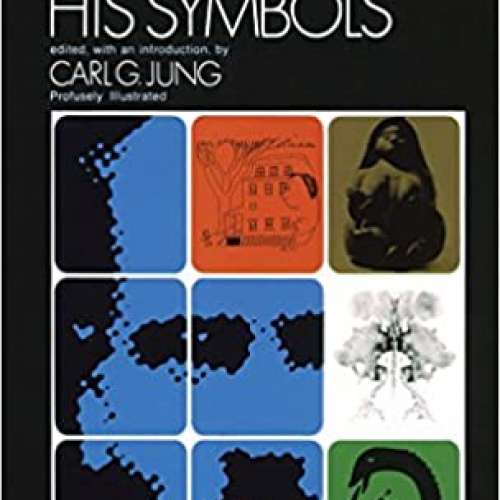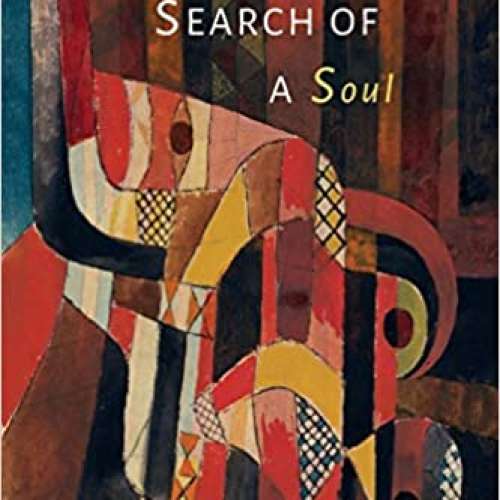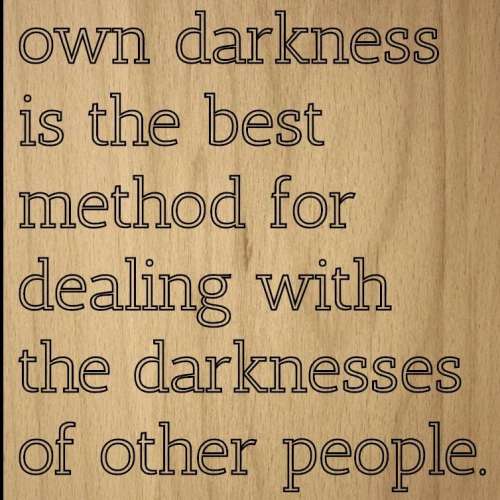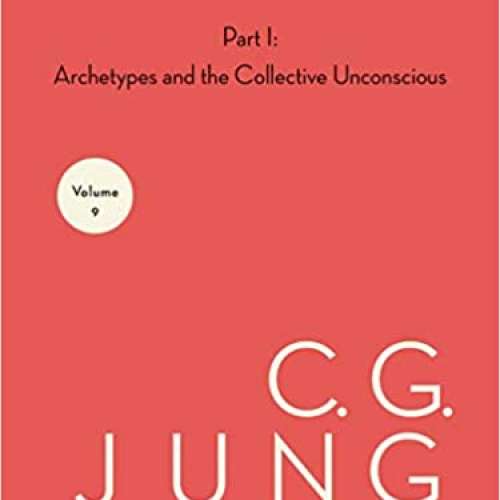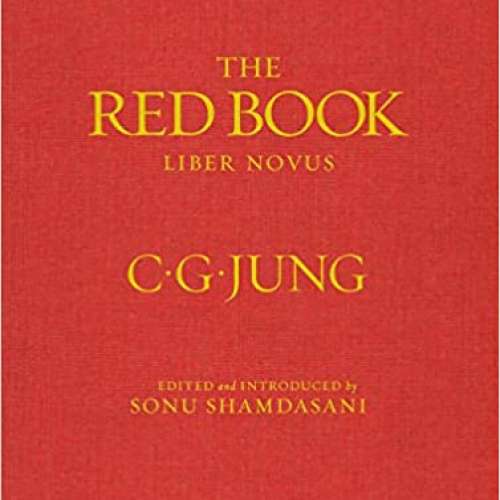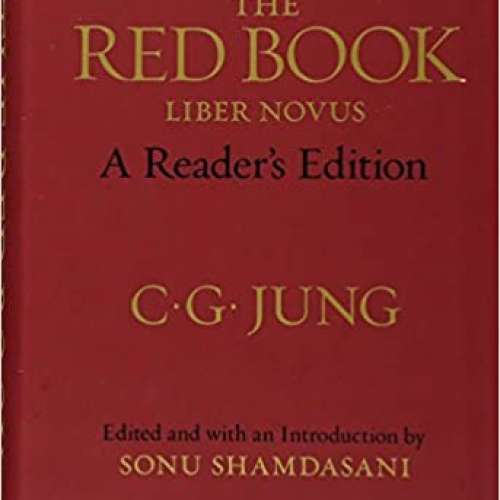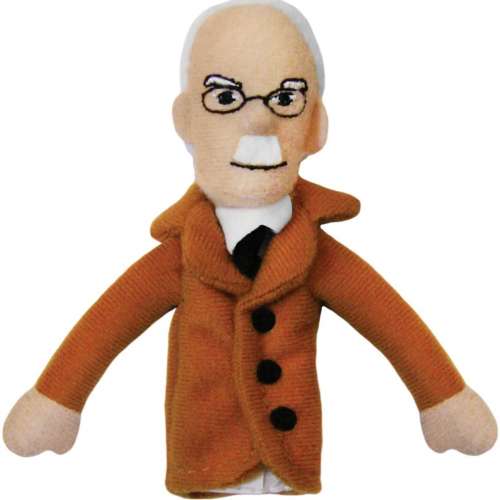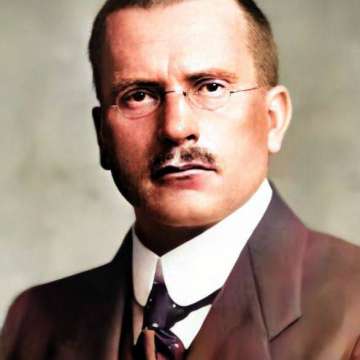

Carl Jung (1875-1961)
We cannot change anything until we accept it.
Carl Gustav Jung was a Swiss psychiatrist and psychoanalyst who founded analytical psychology. Jung's work was influential in the fields of psychiatry, anthropology, archaeology, literature, philosophy, and religious studies. Jung worked as a research scientist at the famous Burghölzli hospital, under Eugen Bleuler. During this time, he came to the attention of Sigmund Freud, the founder of psychoanalysis. The two men conducted a lengthy correspondence and collaborated, for a while, on a joint vision of human psychology.
Freud saw the younger Jung as the heir he had been seeking to take forward his "new science" of psychoanalysis and to this end secured his appointment as President of his newly founded International Psychoanalytical Association. Jung's research and personal vision, however, made it impossible for him to follow his older colleague's doctrine, and a schism became inevitable. This division was personally painful for Jung and resulted in the establishment of Jung's analytical psychology as a comprehensive system separate from psychoanalysis.
Among the central concepts of analytical psychology is individuation—the lifelong psychological process of differentiation of the self out of each individual's conscious and unconscious elements. Jung considered it to be the main task of human development. He created some of the best known psychological concepts, including synchronicity, archetypal phenomena, the collective unconscious, the psychological complex, and extraversion and introversion.
Jung was also an artist, craftsman and builder as well as a prolific writer. Many of his works were not published until after his death and some are still awaiting publication.
Biography
Early years
Childhood
Karl Gustav Jung was born in Kesswil, in the Swiss canton of Thurgau, on 26 July 1875 as the second and first surviving son, following two stillbirths, of Paul Achilles Jung 1842–1896 and Emilie Preiswerk 1848–1923. Their first child, born in 1873, was a boy named Paul, who survived only a few days. Being the youngest son of a noted Basel professor of Medicine and Protestant convert of German descent, also called Karl Gustav Jung 1794–1864, whose hopes of achieving a fortune never materialised, Paul Jung did not progress beyond the status of an impoverished rural pastor in the Swiss Reformed Church; his wife had also grown up in a large family, whose Swiss roots went back five centuries. Emilie was the youngest child of a distinguished Basel churchman and academic, Samuel Preiswerk 1799–1871, and his second wife. Preiswerk was antistes, the title given to the head of the Reformed clergy in the city, as well as a Hebraist, author, and editor, who taught Paul Jung as his professor of Hebrew at Basel University.
When Jung was six months old, his father was appointed to a more prosperous parish in Laufen, but the tension between his parents was growing. Emilie Jung was an eccentric and depressed woman; she spent considerable time in her bedroom where she said that spirits visited her at night. Although she was normal during the day, Jung recalled that at night his mother became strange and mysterious. He reported that one night he saw a faintly luminous and indefinite figure coming from her room with a head detached from the neck and floating in the air in front of the body. Jung had a better relationship with his father.
Jung's mother left Laufen for several months of hospitalization near Basel for an unknown physical ailment. His father took the boy to be cared for by Emilie Jung's unmarried sister in Basel, but he was later brought back to his father's residence. Emilie Jung's continuing bouts of absence and depression deeply troubled her son and caused him to associate women with "innate unreliability", whereas "father" meant for him reliability but also powerlessness. In his memoir, Jung would remark that this parental influence was the "handicap I started off with. Later, these early impressions were revised: I have trusted men friends and been disappointed by them, and I have mistrusted women and was not disappointed." After three years of living in Laufen, Paul Jung requested a transfer. In 1879 he was called to Kleinhüningen , next to Basel, where his family lived in a parsonage of the church. The relocation brought Emilie Jung closer into contact with her family and lifted her melancholy. When he was nine years old, Jung's sister Johanna Gertrud 1884–1935 was born. Known in the family as "Trudi", she later became a secretary to her brother.
Memories of childhood
Jung was a solitary and introverted child. From childhood, he believed that, like his mother, he had two personalities—a modern Swiss citizen and a personality more suited to the 18th century. "Personality Number 1", as he termed it, was a typical schoolboy living in the era of the time. "Personality Number 2" was a dignified, authoritative and influential man from the past. Although Jung was close to both parents, he was disappointed by his father's academic approach to faith.
A number of childhood memories made lifelong impressions on him. As a boy, he carved a tiny mannequin into the end of the wooden ruler from his pencil case and placed it inside the case. He added a stone, which he had painted into upper and lower halves, and hid the case in the attic. Periodically, he would return to the mannequin, often bringing tiny sheets of paper with messages inscribed on them in his own secret language. He later reflected that this ceremonial act brought him a feeling of inner peace and security. Years later, he discovered similarities between his personal experience and the practices associated with totems in indigenous cultures, such as the collection of soul-stones near Arlesheim or the tjurungas of Australia. He concluded that his intuitive ceremonial act was an unconscious ritual, which he had practiced in a way that was strikingly similar to those in distant locations which he, as a young boy, knew nothing about. His observations about symbols, archetypes, and the collective unconscious were inspired, in part, by these early experiences combined with his later research.
At the age of 12, shortly before the end of his first year at the Humanistisches Gymnasium in Basel, Jung was pushed to the ground by another boy so hard that he momentarily lost consciousness. Jung later recognized that the incident was indirectly his fault. A thought then came to him—"now you won't have to go to school anymore." From then on, whenever he walked to school or began homework, he fainted. He remained at home for the next six months until he overheard his father speaking hurriedly to a visitor about the boy's future ability to support himself. They suspected he had epilepsy. Confronted with the reality of his family's poverty, he realized the need for academic excellence. He went into his father's study and began poring over Latin grammar. He fainted three more times but eventually overcame the urge and did not faint again. This event, Jung later recalled, "was when I learned what a neurosis is."
University studies and early career
Initially, Jung had aspirations of becoming a preacher or minister in his early life. There was a strong moral sense in his household and several of his family members were clergymen as well. For a time, Jung had wanted to study archaeology, but his family could not afford to send him further than the University of Basel, which did not teach archaeology. After studying philosophy in his teens, Jung decided against the path of religious traditionalism and decided instead to pursue psychiatry and medicine. His interest was immediately captured—it combined the biological and the spiritual, exactly what he was searching for. In 1895 Jung began to study medicine at the University of Basel. Barely a year later in 1896, his father Paul died and left the family near destitute. They were helped out by relatives who also contributed to Jung's studies. During his student days, he entertained his contemporaries with the family legend, that his paternal grandfather was the illegitimate son of Goethe and his German great-grandmother, Sophie Ziegler. In later life, he pulled back from this tale, saying only that Sophie was a friend of Goethe's niece.
In 1900, Jung moved to Zürich and began working at the Burghölzli psychiatric hospital under Eugen Bleuler. Bleuler was already in communication with the Austrian neurologist Sigmund Freud. Jung's dissertation, published in 1903, was titled On the Psychology and Pathology of So-Called Occult Phenomena. It was based in the analysis of the supposed mediumship of Jung's cousin Hélène Preiswerk, under the influence of Freud's contemporary Théodore Flournoy. Jung also studied with Pierre Janet in Paris in 1902 and later equated his view of the complex with Janet's idée fixe subconsciente. In 1905, Jung was appointed as a permanent 'senior' doctor at the hospital and also became a lecturer Privatdozent in the medical faculty of Zurich University. In 1904, he published with Franz Riklin their Diagnostic Association Studies, of which Freud obtained a copy. In 1909, Jung left the psychiatric hospital and began a private practice in his home in Küsnacht.
Eventually a close friendship and a strong professional association developed between the elder Freud and Jung, which left a sizeable correspondence. For six years they cooperated in their work. In 1912, however, Jung published Psychology of the Unconscious, which made manifest the developing theoretical divergence between the two. Consequently, their personal and professional relationship fractured—each stating that the other was unable to admit he could possibly be wrong. After the culminating break in 1913, Jung went through a difficult and pivotal psychological transformation, exacerbated by the outbreak of the First World War. Henri Ellenberger called Jung's intense experience a "creative illness" and compared it favorably to Freud's own period of what he called neurasthenia and hysteria.:173
Marriage
In 1903, Jung married Emma Rauschenbach, seven years his junior and the elder daughter of a wealthy industrialist in eastern Switzerland, Johannes Rauschenbach-Schenck, and his wife. Rauschenbach was the owner, among other concerns, of IWC Schaffhausen—the International Watch Company, manufacturers of luxury time-pieces. Upon his death in 1905, his two daughters and their husbands became owners of the business. Jung's brother-in-law—Ernst Homberger—became the principal proprietor, but the Jungs remained shareholders in a thriving business that ensured the family's financial security for decades. Emma Jung, whose education had been limited, evinced considerable ability and interest in her husband's research and threw herself into studies and acted as his assistant at Burghölzli. She eventually became a noted psychoanalyst in her own right. They had five children: Agathe, Gret, Franz, Marianne, and Helene. The marriage lasted until Emma's death in 1955.
During his marriage, Jung allegedly engaged in extramarital relationships. His alleged affairs with Sabina Spielrein and Toni Wolff were the most widely discussed. Though it was mostly taken for granted that Jung's relationship with Spielrein included a sexual relationship, this assumption has been disputed, in particular by Henry Zvi Lothane.
Wartime army service
During World War I, Jung was drafted as an army doctor and soon made commandant of an internment camp for British officers and soldiers. The Swiss were neutral, and obliged to intern personnel from either side of the conflict who crossed their frontier to evade capture. Jung worked to improve the conditions of soldiers stranded in Switzerland and encouraged them to attend university courses.
Relationship with Freud
Meeting and collaboration
Jung and Freud influenced each other during the intellectually formative years of Jung's life. Jung had become interested in psychiatry as a student by reading Psychopathia Sexualis by Richard von Krafft-Ebing. In 1900, Jung completed his degree, and started work as an intern voluntary doctor under the psychiatrist, Eugen Bleuler at Burghölzli Hospital. It was Bleuler who introduced him to the writings of Freud by asking him to write a review of The Interpretation of Dreams 1899. In the early 1900s psychology as a science was still in its early stages, but Jung became a qualified proponent of Freud's new "psycho-analysis." At the time, Freud needed collaborators and pupils to validate and spread his ideas. Burghölzli was a renowned psychiatric clinic in Zurich and Jung's research had already gained him international recognition. Jung sent Freud a copy of his Studies in Word Association in 1906. The same year, he published Diagnostic Association Studies, which he later sent a copy of to Freud—who had already purchased a copy. Preceded by a lively correspondence, Jung met Freud for the first time in Vienna on 3 March 1907. Jung recalled the discussion between himself and Freud as interminable, unceasing for thirteen hours. Six months later, the then 50-year-old Freud sent a collection of his latest published essays to Jung in Zurich. This marked the beginning of an intense correspondence and collaboration that lasted six years. In 1908, Jung became an editor of the newly founded Yearbook for Psychoanalytical and Psychopathological Research.

In 1909, Jung travelled with Freud and Hungarian psychoanalyst Sándor Ferenczi to the United States; they took part in a conference at Clark University in Worcester, Massachusetts. The conference at Clark University was planned by the psychologist G. Stanley Hall and included twenty-seven distinguished psychiatrists, neurologists and psychologists. It represented a watershed in the acceptance of psychoanalysis in North America. This forged welcome links between Jung and influential Americans. Jung returned to the United States the next year for a brief visit.
In 1910 Freud proposed Jung, "his adopted eldest son, his crown prince and successor," for the position of life-time President of the newly formed International Psychoanalytical Association. However, after forceful objections from his Viennese colleagues, it was agreed Jung would be elected to serve a two-year term of office.
Divergence and break
While Jung worked on his Psychology of the Unconscious: a study of the transformations and symbolisms of the libido, tensions manifested between him and Freud because of various disagreements, including those concerning the nature of libido. Jung de-emphasized the importance of sexual development and focused on the collective unconscious: the part of the unconscious that contains memories and ideas that Jung believed were inherited from ancestors. While he did think that libido was an important source for personal growth, unlike Freud, Jung did not believe that libido alone was responsible for the formation of the core personality.
In 1912 these tensions came to a peak because Jung felt severely slighted after Freud visited his colleague Ludwig Binswanger in Kreuzlingen without paying him a visit in nearby Zurich, an incident Jung referred to as "the Kreuzlingen gesture". Shortly thereafter, Jung again traveled to the United States and gave the Fordham University lectures, a six-week series, which were published later in the year as Psychology of the Unconscious subsequently republished as Symbols of Transformation. While they contain some remarks on Jung's dissenting view on the libido, they represent largely a "psychoanalytical Jung" and not the theory of analytical psychology, for which he became famous in the following decades. Nonetheless it was their publication which, Jung declared, "cost me my friendship with Freud".

Another primary disagreement with Freud stemmed from their differing concepts of the unconscious. Jung saw Freud's theory of the unconscious as incomplete and unnecessarily negative and inelastic. According to Jung, Freud conceived the unconscious solely as a repository of repressed emotions and desires. Jung's observations overlap to an extent with Freud's model of the unconscious, what Jung called the "personal unconscious", but his hypothesis is more about a process than a static model and he also proposed the existence of a second, overarching form of the unconscious beyond the personal, that he named the psychoid—a term borrowed from Driesch, but with a somewhat altered meaning. The collective unconscious is not so much a 'geographical location', but a deduction from the alleged ubiquity of archetypes over space and time.
In November 1912, Jung and Freud met in Munich for a meeting among prominent colleagues to discuss psychoanalytical journals. At a talk about a new psychoanalytic essay on Amenhotep IV, Jung expressed his views on how it related to actual conflicts in the psychoanalytic movement. While Jung spoke, Freud suddenly fainted and Jung carried him to a couch.
Jung and Freud personally met for the last time in September 1913 for the Fourth International Psychoanalytical Congress in Munich. Jung gave a talk on psychological types, the introverted and extraverted type in analytical psychology.
Midlife isolation
It was the publication of Jung's book Psychology of the Unconscious in 1912 that led to the break with Freud. Letters they exchanged show Freud's refusal to consider Jung's ideas. This rejection caused what Jung described in his posthumous 1962 autobiography, Memories, Dreams, Reflections, as a "resounding censure". Everyone he knew dropped away except for two of his colleagues. Jung described his book as "an attempt, only partially successful, to create a wider setting for medical psychology and to bring the whole of the psychic phenomena within its purview." The book was later revised and retitled Symbols of Transformation in 1922.
London 1913–14
Jung spoke at meetings of the Psycho-Medical Society in London in 1913 and 1914. His travels were soon interrupted by the war, but his ideas continued to receive attention in England primarily through the efforts of Constance Long who translated and published the first English volume of his collected writings.
The Red Book
In 1913, at the age of thirty-eight, Jung experienced a horrible "confrontation with the unconscious". He saw visions and heard voices. He worried at times that he was "menaced by a psychosis" or was "doing a schizophrenia". He decided that it was valuable experience and, in private, he induced hallucinations or, in his words, a process of "active imagination". He recorded everything he experienced in small journals, known as the Black Books although, of the seven volumes, two have brown covers. Jung began to transcribe his notes into a large red leather-bound book, on which he worked intermittently for sixteen years.
Jung left no posthumous instructions about the final disposition of what he called the Liber Novus or the Red Book. Sonu Shamdasani, a historian of psychology from London, tried for three years to persuade Jung's resistant heirs to have it published. Up to mid-September 2008, fewer than two dozen people had ever seen it. Ulrich Hoerni, Jung's grandson who manages the Jung archives, decided to publish it when the necessary additional funds needed were raised through the Philemon Foundation.
In 2007, two technicians for DigitalFusion, working with New York City publishers W. W. Norton & Company, scanned the manuscript with a 10,200-pixel scanner. It was published on 7 October 2009, in German with a "separate English translation along with Shamdasani's introduction and footnotes" at the back of the book. According to Sara Corbett, reviewing the text for The New York Times, "The book is bombastic, baroque and like so much else about Carl Jung, a willful oddity, synched with an antediluvian and mystical reality."
The Rubin Museum of Art in New York City displayed the original Red Book journal, as well as some of Jung's original "Black Book" journals, from 7 October 2009 to 15 February 2010. According to them, "During the period in which he worked on this book Jung developed his principal theories of archetypes, collective unconscious, and the process of individuation." Two-thirds of the pages bear Jung's illuminations and illustrations to the text.
Travels
Jung emerged from his period of isolation in the late nineteen-teens with the publication of several journal articles, followed in 1921 with Psychological Types, one of his most influential books. There followed a decade of active publication, interspersed with overseas travels.
England 1920, 1923, 1925, 1935, 1938, 1946
Constance Long arranged for Jung to deliver a seminar in Cornwall in 1920. Another seminar was held in 1923, this one organized by Helton Godwin Baynes known as "Peter", and another in 1925.
In 1935, at the invitation of his close British friends and colleagues, H.G. Baynes, E. A. Bennet and Hugh Crichton-Miller, Jung gave a series of lectures at the Tavistock Clinic in London, later published as part of the Collected Works.
In 1938, Jung was awarded with an honorary degree by the University of Oxford. At the tenth International Medical Congress for Psychotherapy held at Oxford from 29 July to 2 August 1938, Jung gave the presidential address, followed by a visit to Cheshire to stay with the Bailey family at Lawton Mere.
In 1946, Jung accepted to become first Honorary President of the newly formed Society of Analytical Psychology in London, having previously approved its training programme devised by Michael Fordham.
United States 1909–1912, 1924–25, 1936–37
During the period of Jung's collaboration with Freud, both visited the US in 1909 to lecture at Clark University, Worcester, Massachusetts where both were awarded honorary degrees. In 1912 Jung gave a series of lectures at Fordham University, New York which were published later in the year as Psychology of the Unconscious. Jung made a more extensive trip westward in the winter of 1924–5, financed and organized by Fowler McCormick and George Porter. Of particular value to Jung was a visit with Chief Mountain Lake of the Taos Pueblo near Taos, New Mexico. Jung made another trip to America in 1936, giving lectures in New York and New England for his growing group of American followers. He returned in 1937 to deliver the Terry Lectures at Yale University, later published as Psychology and Religion.
East Africa
In October 1925, Jung embarked on his most ambitious expedition, the "Bugishu Psychological Expedition" to East Africa. He was accompanied by Peter Baynes and an American associate, George Beckwith. On the voyage to Africa, they became acquainted with an English woman named Ruth Bailey, who joined their safari a few weeks later. The group traveled through Kenya and Uganda to the slopes of Mount Elgon, where Jung hoped to increase his understanding of "primitive psychology" through conversations with the culturally isolated residents of that area. Later he concluded that the major insights he had gleaned had to do with himself and the European psychology in which he had been raised.
India
In December 1937, Jung left Zurich again for an extensive tour of India with Fowler McCormick. In India, he felt himself "under the direct influence of a foreign culture" for the first time. In Africa, his conversations had been strictly limited by the language barrier, but in India he was able to converse extensively. Hindu philosophy became an important element in his understanding of the role of symbolism and the life of the unconscious, though he avoided a meeting with Ramana Maharshi. He described Ramana as being absorbed in "the self". Jung became seriously ill on this trip and endured two weeks of delirium in a Calcutta hospital. After 1938, his travels were confined to Europe.
Later years and death
Jung became a full professor of medical psychology at the University of Basel in 1943, but resigned after a heart attack the next year to lead a more private life. He became ill again in 1952.
Jung continued to publish books until the end of his life, including Flying Saucers: A Modern Myth of Things Seen in the Skies 1959, which analyzed the archetypal meaning and possible psychological significance of the reported observations of UFOs. He also enjoyed a friendship with an English Roman Catholic priest, Father Victor White, who corresponded with Jung after he had published his controversial Answer to Job.
In 1961, Jung wrote his last work, a contribution to Man and His Symbols entitled "Approaching the Unconscious" published posthumously in 1964. Jung died on 6 June 1961 at Küsnacht after a short illness.:450 He had been beset by circulatory diseases.
Awards
Among his principal distinctions are Honorary doctorates from:
- Clark University 1909
- Fordham University 1912
- Harvard University 1936
- University of Allahabad 1937
- University of Benares 1937
- University of Calcutta 1938
- University of Oxford 1938
- University of Geneva 1945
- Swiss Federal Institute of Technology in Zurich 1955 on his 80th birthday
In addition he was:
- given a Literature prize from the city of Zurich, 1932
- made Titular Professor of the Swiss Federal Institute of Technology in Zurich, ETH 1935
- appointed Honorary Member of the Royal Society of Medicine 1939
- given a Festschrift at Eranos 1945
- appointed President of the Society of Analytical Psychology, London, 1946
- given a Festschrift by students and friends 1955
- named Honorary citizen of Kűsnacht 1960, on his 85th birthday.
Thought
Jung's thought was formed by early family influences, which on the maternal side were a blend of interest in the occult and in solid reformed academic theology. On his father's side were two important figures, his grandfather the physician and academic scientist, Karl Gustav Jung and the family's actual connection with Lotte Kestner, the niece of the German polymath, Johann Wolfgang Goethe' s "Löttchen". Although he was a practicing clinician and writer and as such founded analytical psychology, much of his life's work was spent exploring related areas such as physics, vitalism, Eastern and Western philosophy, alchemy, astrology, and sociology, as well as literature and the arts. Jung's interest in philosophy and spiritual subjects led many to view him as a mystic, although his preference was to be seen as a man of science.
Key concepts
The major concepts of analytical psychology as developed by Jung include:
Archetype – a concept "borrowed" from anthropology to denote supposedly universal and recurring mental images or themes. Jung's definitions of archetypes varied over time and have been the subject of debate as to their usefulness.
Archetypal images – universal symbols that can mediate opposites in the psyche, often found in religious art, mythology and fairy tales across cultures
Complex – the repressed organization of images and experiences that governs perception and behaviour
Extraversion and introversion – personality traits of degrees of openness or reserve contributing to psychological type.
Persona - element of the personality that arises "for reasons of adaptation or personal convenience" - the "masks" one puts on in various situations.
Shadow – the repressed, therefore unknown, aspects of the personality including those often considered to be negative
Ego - the center of the field of consciousness, the part of the psyche where our conscious sense of identity and existence resides.
Collective unconscious – aspects of unconsciousness experienced by all people in different cultures
Anima – the contrasexual aspect of a man's psyche, his inner personal feminine conceived both as a complex and an archetypal image
Animus – the contrasexual aspect of a woman's psyche, her inner personal masculine conceived both as a complex and an archetypal image
Self – the central overarching concept governing the individuation process, as symbolised by mandalas, the union of male and female, totality, unity. Jung viewed it as the psyche's central archetype
Individuation – the process of fulfilment of each individual "which negates neither the conscious or unconscious position but does justice to them both".
Synchronicity – an acausal principle as a basis for the apparently random simultaneous occurrence of phenomena.
Archetype
The archetype is a concept "borrowed" from anthropology to denote a process of nature. Jung's definitions of archetypes varied over time and have been the subject of debate as to their usefulness. Archetypal images, also referred to as motifs in mythology[b], are universal symbols that can mediate opposites in the psyche, are often found in religious art, mythology and fairy tales across cultures. Jung saw archetypes as pre-configurations in nature which give rise to repeating, understandable, describable experiences. In addition the concept takes into account the passage of time and of patterns resulting from transformation. Archetypes are said to exist independently of any current event, or its resulting effect. They are said to exert influence both across all domains of experience, and throughout the stages of each individual's unique development. Being in part based in heritable physiology, they are thought to have 'existed' since humans became a differentiated species. They have been deduced through the development of story telling over tens of thousands of years, indicating repeating patterns of individual and group experience, behaviours and effects across the planet, apparently displaying common themes.

The concept did not originate with Jung but with Plato who first conceived of primordial patterns. Later contributions came from Adolf Bastian, and Hermann Usener among others. In the first half of the twentieth century it proved impossible to objectively isolate and categorize the notion of an archetype within a materialist frame. According to Jung, there are "as many archetypes as there are typical situations in life", and he asserted that they have a dynamic mutual influence on one another. Their alleged presence could be extracted from thousand year old narratives, from comparative religion and mythology.Jung elaborated many archetypes in "The Archetypes and the Collective Unconscious" and in "Aion: Researches into the Phenomenology of the Self". Examples of archetypes might be, the shadow, the hero, the self, anima, animus, mother, father, child and trickster.
Shadow
The shadow exists as part of the unconscious mind and is composed of the traits individuals instinctively or consciously resist identifying as their own, would rather ignore, typically: repressed ideas, weaknesses, desires, instincts, and shortcomings. Much of the shadow comes as a result of an individual's adaption to cultural norms and expectations. Thus, this archetype not only consists of all the things deemed unacceptable by society, but also those that are not aligned with one's own personal morals and values.
Jung argues that the shadow plays a distinctive role in balancing in one's overall psyche, the counter-balancing to consciousness - "where there is light, there must also be shadow”. Without a well-developed shadow, (often "shadow work", "integrating one's shadow") an individual can become shallow and extremely preoccupied with the opinions of others - i.e., a walking persona. Not wanting to look at their shadow's directly, Jung argues, often results in psychological projection. Individuals project imagined attitudes onto others without awareness. The qualities an individual may hate (or love) in another, may be manifestly present in the individual, who does not see the external, material truth. In order to truly grow as an individual, Jung believed that both the persona and shadow should be balanced.
The shadow can appear in dreams or visions, often taking the form of a dark, wild, exotic figure.
Extraversion and introversion
Jung was one of the first people to define introversion and extraversion in a psychological context. In Jung's Psychological Types, he theorizes that each person falls into one of two categories, the introvert and the extravert. These two psychological types Jung compares to ancient archetypes, Apollo and Dionysus. The introvert is likened with Apollo, who shines light on understanding. The introvert is focused on the internal world of reflection, dreaming and vision. Thoughtful and insightful, the introvert can sometimes be uninterested in joining the activities of others. The extravert is associated with Dionysus, interested in joining the activities of the world. The extravert is focused on the outside world of objects, sensory perception and action. Energetic and lively, the extravert may lose their sense of self in the intoxication of Dionysian pursuits. Jungian introversion and extraversion is quite different from the modern idea of introversion and extraversion. Modern theories often stay true to behaviourist means of describing such a trait sociability, talkativeness, assertiveness etc. whereas Jungian introversion and extraversion is expressed as a perspective: introverts interpret the world subjectively, whereas extraverts interpret the world objectively.
Persona
In his psychological theory – which is not necessarily linked to a particular theory of social structure – the persona appears as a consciously created personality or identity, fashioned out of part of the collective psyche through socialization, acculturation and experience. Jung applied the term persona, explicitly because, in Latin, it means both personality and the masks worn by Roman actors of the classical period, expressive of the individual roles played.

The persona, he argues, is a mask for the "collective psyche", a mask that 'pretends' individuality, so that both self and others believe in that identity, even if it is really no more than a well-played role through which the collective psyche is expressed. Jung regarded the "persona-mask" as a complicated system which mediates between individual consciousness and the social community: it is "a compromise between the individual and society as to what a man should appear to be". But he also makes it quite explicit that it is, in substance, a character mask in the classical sense known to theatre, with its double function: both intended to make a certain impression on others, and to hide part of the true nature of the individual. The therapist then aims to assist the individuation process through which the client regains their "own self" – by liberating the self, both from the deceptive cover of the persona, and from the power of unconscious impulses.
Jung has become enormously influential in management theory; not just because managers and executives have to create an appropriate "management persona" a corporate mask and a persuasive identity, but also because they have to evaluate what sort of people the workers are, in order to manage them for example, using personality tests and peer reviews.
Shadow
The shadow exists as part of the unconscious mind and is composed of the traits individuals dislike/would rather ignore: repressed ideas, weaknesses, desires, instincts, and shortcomings. The shadow is the result of an individual's attempt to adapt to cultural norms and expectations. Thus, this archetype not only consists of all the things deemed unacceptable by society, but also those that are not aligned with one's own personal morals and values.
Jung argues that the shadow plays an important role in balancing one's overall psyche - "where there is light, there must also be shadow”. Without a well-developed shadow, an individual can become shallow and extremely preoccupied with the opinions of others - i.e., a walking persona. Not wanting to look at their shadow's directly, Jung argues, causes many individuals to project them onto others. Basically, the qualities an individual may hate in another, are actually also present in that individual, who wishes not to see them. In order to truly grow as an individual, Jung believed that both the persona and shadow should be balanced.
The shadow can appear in dreams or visions, often taking the form of a dark, wild, exotic figure.
Spirituality
Jung's work on himself and his patients convinced him that life has a spiritual purpose beyond material goals. Our main task, he believed, is to discover and fulfill our deep, innate potential. Based on his study of Christianity, Hinduism, Buddhism, Gnosticism, Taoism, and other traditions, Jung believed that this journey of transformation, which he called individuation, is at the mystical heart of all religions. It is a journey to meet the self and at the same time to meet the Divine. Unlike Freud's objectivist worldview, Jung's pantheism may have led him to believe that spiritual experience was essential to our well-being, as he specifically identifies individual human life with the universe as a whole.
In 1959, Jung was asked by host John Freeman on the BBC interview program Face to Face whether he believed in God, to which Jung answered, "I do not need to believe. I know." Jung's ideas on religion counterbalance Freudian skepticism. Jung's idea of religion as a practical road to individuation is still treated in modern textbooks on the psychology of religion, though his ideas have also been criticized.
Jung recommended spirituality as a cure for alcoholism, and he is considered to have had an indirect role in establishing Alcoholics Anonymous. Jung once treated an American patient Rowland Hazard III, suffering from chronic alcoholism. After working with the patient for some time and achieving no significant progress, Jung told the man that his alcoholic condition was near to hopeless, save only the possibility of a spiritual experience. Jung noted that, occasionally, such experiences had been known to reform alcoholics when all other options had failed.
Hazard took Jung's advice seriously and set about seeking a personal, spiritual experience. He returned home to the United States and joined a Christian evangelical movement known as the Oxford Group later known as Moral Re-Armament. He also told other alcoholics what Jung had told him about the importance of a spiritual experience. One of the alcoholics he brought into the Oxford Group was Ebby Thacher, a long-time friend and drinking buddy of Bill Wilson, later co-founder of Alcoholics Anonymous AA. Thacher told Wilson about the Oxford Group and, through them, Wilson became aware of Hazard's experience with Jung. The influence of Jung thus indirectly found its way into the formation of Alcoholics Anonymous, the original twelve-step program.
The above claims are documented in the letters of Jung and Bill Wilson, excerpts of which can be found in Pass It On, published by Alcoholics Anonymous. Although the detail of this story is disputed by some historians, Jung himself discussed an Oxford Group member, who may have been the same person, in talks given around 1940. The remarks were distributed privately in transcript form, from shorthand taken by an attender Jung reportedly approved the transcript, and later recorded in Volume 18 of his Collected Works, The Symbolic Life,
For instance, when a member of the Oxford Group comes to me in order to get treatment, I say, 'You are in the Oxford Group; so long as you are there, you settle your affair with the Oxford Group. I can't do it better than Jesus.
Jung goes on to state that he has seen similar cures among Roman Catholics. The 12 step program of Alcoholics Anonymous has an intense psychological backdrop, involving the human ego and dichotomy between the conscious and unconscious mind.
Inquiries into the paranormal
Jung had an apparent interest in the paranormal and occult. For decades he attended seances and claimed to have witnessed "parapsychic phenomena". Initially he attributed these to psychological causes, even delivering a 1919 lecture in England for the Society for Psychical Research on "The Psychological Foundations for the belief in spirits". However, he began to "doubt whether an exclusively psychological approach can do justice to the phenomena in question" and stated that "the spirit hypothesis yields better results". Showing his own skepticism toward this postulation, as he could not find material evidence of the existence of spirits.
Jung's ideas about the paranormal culminated in "synchronicity", his idea that meaningful connections in the world manifest through coincidence with no apparent causal link. What he referred to as "acausal connecting principle". Despite his own experiments failing to confirm the phenomenon he held on to the idea as an explanation for apparent ESP. As well as proposing it as a functional explanation for how the I-Ching worked, although he was never clear about how synchronicity worked.
Interpretation of quantum mechanics
Jung influenced one philosophical interpretation not the science of quantum physics with the concept of synchronicity regarding some events as non-causal. That idea influenced the physicist Wolfgang Pauli with whom, via a letter correspondence, he developed the notion of unus mundus in connection with the notion of nonlocality and some other physicists.
Alchemy
The work and writings of Jung from the 1940s onwards focused on alchemy.
In 1944 Jung published Psychology and Alchemy, in which he analyzed the alchemical symbols and came to the conclusion that there is a direct relationship between them and the psychoanalytical process. He argued that the alchemical process was the transformation of the impure soul lead to perfected soul gold, and a metaphor for the individuation process.

In 1963 Mysterium Coniunctionis first appeared in English as part of The Collected Works of C. G. Jung. Mysterium Coniunctionis was Jung's last book and focused on the "Mysterium Coniunctionis" archetype, known as the sacred marriage between sun and moon. Jung argued that the stages of the alchemists, the blackening, the whitening, the reddening and the yellowing, could be taken as symbolic of individuation—his favourite term for personal growth 75.
Art therapy
Jung proposed that art can be used to alleviate or contain feelings of trauma, fear, or anxiety and also to repair, restore and heal. In his work with patients and in his own personal explorations, Jung wrote that art expression and images found in dreams could be helpful in recovering from trauma and emotional distress. At times of emotional distress, he often drew, painted, or made objects and constructions which he recognized as more than recreational.
Dance/movement therapy
Dance/movement therapy as an active imagination was created by Carl Gustav Jung and Toni Wolff in 1916 and was practiced by Tina Keller-Jenny and other analysts, but remained largely unknown until the 1950s when it was rediscovered by Marian Chace and therapist Mary Whitehouse. Whitehouse, after studying with Martha Graham and Mary Wigman, became herself a dancer and teacher of modern dance, as well as Swiss Dancer Trudy Schoop in 1963, who is considered one of the founders of the dance/movement therapy in the United States.
Political views
The state
Jung stressed the importance of individual rights in a person's relation to the state and society. He saw that the state was treated as "a quasi-animate personality from whom everything is expected" but that this personality was "only camouflage for those individuals who know how to manipulate it", and referred to the state as a form of slavery. He also thought that the state "swallowed up religious forces", and therefore that the state had "taken the place of God"—making it comparable to a religion in which "state slavery is a form of worship". Jung observed that "stage acts of state" are comparable to religious displays:
"Brass bands, flags, banners, parades and monster demonstrations are no different in principle from ecclesiastical processions, cannonades and fire to scare off demons". From Jung's perspective, this replacement of God with the state in a mass society leads to the dislocation of the religious drive and results in the same fanaticism of the church-states of the Dark Ages—wherein the more the state is 'worshipped', the more freedom and morality are suppressed; this ultimately leaves the individual psychically undeveloped with extreme feelings of marginalization.
Germany, 1933 to 1939
Jung had many Jewish friends and colleagues and maintained relations with them throughout the 1930s despite prevailing anti-semitism. Until 1939, he also maintained professional relations with psychotherapists in Germany who had declared their support for the Nazi regime. Some scholars allege that he himself sympathized with the regime.
In 1933, after the Nazis gained power in Germany, Jung took part in restructuring of the General Medical Society for Psychotherapy Allgemeine Ärztliche Gesellschaft für Psychotherapie, a German-based professional body with an international membership. The society was reorganized into two distinct bodies:
- A strictly German body, the Deutsche Allgemeine Ärztliche Gesellschaft für Psychotherapie, led by Matthias Göring, an Adlerian psychotherapist and a cousin of the prominent Nazi Hermann Göring
- International General Medical Society for Psychotherapy, led by Jung. The German body was to be affiliated to the international society, as were new national societies being set up in Switzerland and elsewhere.
The International Society's constitution permitted individual doctors to join it directly, rather than through one of the national affiliated societies, a provision to which Jung drew attention in a circular in 1934. This implied that German Jewish doctors could maintain their professional status as individual members of the international body, even though they were excluded from the German affiliate, as well as from other German medical societies operating under the Nazis.
As leader of the international body, Jung assumed overall responsibility for its publication, the Zentralblatt für Psychotherapie. In 1933, this journal published a statement endorsing Nazi positions and Hitler's book Mein Kampf. In 1934, Jung wrote in a Swiss publication, the Neue Zürcher Zeitung, that he experienced "great surprise and disappointment" when the Zentralblatt associated his name with the pro-Nazi statement.
Jung went on to say "the main point is to get a young and insecure science into a place of safety during an earthquake". He did not end his relationship with the Zentralblatt at this time, but he did arrange the appointment of a new managing editor, Carl Alfred Meier of Switzerland. For the next few years, the Zentralblatt under Jung and Meier maintained a position distinct from that of the Nazis, in that it continued to acknowledge contributions of Jewish doctors to psychotherapy. In the face of energetic German attempts to Nazify the international body, Jung resigned from its presidency in 1939, the year the Second World War started.
Nazism and antisemitism
Jung's interest in European mythology and folk psychology was shared by the Nazis. Richard Noll describes Jung's own reaction to this connection:
Jung clearly identifies himself with the spirit of German Volkstumsbewegung throughout this period and well into the 1920s and 1930s, until the horrors of Nazism finally compelled him to reframe these neopagan metaphors in a negative light in his 1936 essay on Wotan.
Various statements made by Jung in the 1930s have been cited as evidence of both contempt for Nazism and sympathy for Nazism. In the 1936 essay "Wotan", Jung described the influence of Adolf Hitler on Germany as "one man who is obviously 'possessed' has infected a whole nation to such an extent that everything is set in motion and has started rolling on its course towards perdition." He would later say, during a lengthy interview with H. R. Knickerbocker in October 1938:
Hitler seemed like the 'double' of a real person, as if Hitler the man might be hiding inside like an appendix, and deliberately so concealed in order not to disturb the mechanism ... You know you could never talk to this man; because there is nobody there ... It is not an individual; it is an entire nation.
Jung consistently rejected accusations of antisemitism. In a 1948 interview with Carol Baumann, he stated:
It must be clear to anyone who has read any of my books that I have never been a Nazi sympathizer and I never have been anti-Semitic, and no amount of misquotation, mistranslation, or rearrangement of what I have written can alter the record of my true point of view. Nearly every one of these passages has been tampered with, either by malice or by ignorance. Furthermore, my friendly relations with a large group of Jewish colleagues and patients over a period of many years in itself disproves the charge of anti-Semitism.
The accusations, however, have continued to be made with reference to Jung's statements. Avner Falk cites articles such as “The State of Psychotherapy Today”, published in 1934 in the Zentralblatt fur Psychotherapie, where Jung wrote: "The Aryan unconscious has a greater potential than the Jewish unconscious" and "The Jew, who is something of a nomad, has never yet created a cultural form of his own and as far as we can see never will". Andrew Samuels argues that his remarks on the "Aryan unconscious" and the "corrosive character" of Freud's "Jewish gospel" demonstrate an antisemitism "fundamental to the structure of Jung’s thought".
Service to the Allies during World War II
Jung was in contact with Allen Dulles of the Office of Strategic Services predecessor of the Central Intelligence Agency and provided valuable intelligence on the psychological condition of Hitler. Dulles referred to Jung as "Agent 488" and offered the following description of his service: "Nobody will probably ever know how much Professor Jung contributed to the Allied Cause during the war, by seeing people who were connected somehow with the other side". Jung's service to the Allied cause through the OSS remained classified after the war.
Legacy
The Myers-Briggs Type Indicator MBTI, a popular psychometric instrument, and the concepts of socionics were developed from Jung's theory of psychological types. Jung saw the human psyche as "by nature religious" and made this religiousness the focus of his explorations. Jung is one of the best known contemporary contributors to dream analysis and symbolization. His influence on popular psychology, the "psychologization of religion", spirituality and the New Age movement has been immense. A Review of General Psychology survey, published in 2002, ranked Jung as the 23rd most cited psychologist of the 20th century.
In popular culture
Literature
- Laurens van der Post was an Afrikaner author who claimed to have had a 16-year friendship with Jung, from which a number of books and a film were created about Jung. The accuracy of van der Post's claims about his relationship to Jung has been questioned.
- Hermann Hesse, author of works such as Siddhartha and Steppenwolf, was treated by Joseph Lang, a student of Jung. For Hesse this began a long preoccupation with psychoanalysis, through which he came to know Jung personally.
- In his novel The World is Made of Glass 1983, Morris West gives a fictional account of one of Jung's cases, placing the events in 1913. According to the author's note, the novel is "based upon a case recorded, very briefly, by Carl Gustav Jung in his autobiographical work Memories, Dreams, Reflections".
- The Canadian novelist Robertson Davies made Jungian analysis a central part of his 1970 novel The Manticore. He stated in a letter, "There have been other books which describe Freudian analyses, but I know of no other that describes a Jungian analysis" adding "I was deeply afraid that I would put my foot in it, for I have never undergone one of those barnacle-scraping experiences, and knew of it only through reading. So I was greatly pleased when some of my Jungian friends in Zurich liked it very much."
Art
- The visionary Swiss painter Peter Birkhäuser was treated by a student of Jung, Marie-Louise von Franz, and corresponded with Jung about the translation of dream symbolism into works of art.
- American Abstract Expressionist Jackson Pollock underwent Jungian psychotherapy in 1939 with Joseph Henderson. Henderson engaged Pollock through his art, having him make drawings, which led to the appearance of many Jungian concepts in his paintings.
- Contrary to some sources, Jung did not visit Liverpool but recorded a dream in which he did, and of which he wrote, "Liverpool is the pool of life, it makes to live." A plaster statue of Jung was erected in Mathew Street in 1987 that was vandalised and replaced by a more durable version in 1993.
Music
- Musician David Bowie described himself as Jungian in his relationship to dreams and the unconscious. Bowie sang of Jung on his album Aladdin Sane a pun on " a lad insane" and attended the exhibition of The Red Book in New York with artist Tony Oursler, who described Bowie as "reading and speaking of the psychoanalyst with passion". Bowie's 1967 song "Shadow Man" encapsulates a key Jungian concept, while in 1987 Bowie described the Glass Spiders of Never Let Me Down as Jungian mother figures around which he not only anchored a worldwide tour but also created an enormous onstage effigy.
- British rock band, The Police, released an album titled Synchronicity in 1983.
- Banco de Gaia called his 2009 electronic music album, "Memories Dreams Reflections".
- The American rock band Tool was influenced by Jungian concepts in its album Ænima, the title a play on the concepts of anima and animus. In the song Forty Six & 2, the singer seeks to become a more evolved self by exploring and overcoming his Shadow.
- Argentinian musician Luis Alberto Spinetta was influenced by Jung's texts in his 1975 conceptual album Durazno sangrando, specifically the songs "Encadenado al ánima" and "En una lejana playa del ánimus", which deal with anima and animus.
- Jung appeared on the front cover of The Beatles' Sgt. Pepper's Lonely Hearts Club Band.
- The South Korean band BTS's 2019 album Map of the Soul: Persona is based on Jung's Map of the Soul, which gives the basic principles of Jung's analytical psychology. It includes an intro song titled Persona rapped by group leader RM, who asks, "who am I?", and is confronted with various versions of himself with the words "Persona", "Shadow", and "Ego", referring to Jung's theories. On February 21, 2020, the band released Map of the Soul: 7, which specifically focuses on Jung's "Shadow" and "Ego" theories. As part of the first phase of the band's comeback, Interlude: Shadow, rapped by Suga and released on January 10, addresses the shadows and the darkness that go hand-in-hand with the light and attention shone on celebrities. The next comeback trailer, "Outro: Ego", performed by J-Hope, ends with his declaration of self and ego as he appears within a colourful city “in which the artist’s current image is projected”.
Theatre, film and television
- Federico Fellini brought to the screen exuberant imagery shaped by his encounter with Jung's ideas, especially Jungian dream interpretation. Fellini preferred Jung to Freud because Jungian analysis defined the dream not as a symptom of a disease that required a cure but rather as a link to archetypal images shared by all of humanity.
- The BBC interviewed Jung for Face to Face with John Freeman at Jung's home in Zurich in 1959.
- Stephen Segaller produced a documentary on Jung as part of his "World of Dreams", Wisdom of the Dream in 1985. It was re-issued in 2018. It was followed by a book of the same title.
- Stanley Kubrick's 1987 film Full Metal Jacket has an underlying theme about the duality of man. In one scene, a colonel asks a soldier, "You write 'Born to Kill' on your helmet and you wear a peace button. What's that supposed to be, some kind of sick joke?" The soldier replies, "I think I was trying to suggest something about the duality of man, sir...the Jungian thing, sir."
- A Dangerous Method, a 2011 film directed by David Cronenberg based on Hampton's play The Talking Cure, is a fictional dramatisation of Jung's life between 1904 and 1913. It mainly concerns his relationships with Freud and Sabina Spielrein, a Russian woman who became his lover and student and, later, an analyst herself.
- More recently, Robert Eggers phycological thriller, The Lighthouse has elements strongly influenced by Jung's work with Eggers hoping that "it’s a movie where both Jung and Freud would be furiously eating their popcorn".
Video games
- The Persona series of games is heavily based on Jung's theories, as is the Nights into Dreams series of games. Xenogears for the original PlayStation and its associated works—including its reimagination as the "Xenosaga" trilogy and a graphic novel published by the game's creator, Perfect Works—center around Jungian concepts.
Bibliography
Books
- 1912 Psychology of the Unconscious
- 1916 Seven Sermons to the Dead a part of the Red Book, published privately
- 1921 Psychological Types
- 1933 Modern Man in Search of a Soul essays
- 1944 Psychology and Alchemy
- 1951 Aion: Researches into the Phenomenology of the Self
- 1952 Symbols of Transformation revised edition of Psychology of the Unconscious
- 1954 Answer to Job
- 1956 Mysterium Coniunctionis: An Inquiry into the Separation and Synthesis of Psychic Opposites in Alchemy
- 1961 Memories, Dreams, Reflections autobiography, co-written with Aniela Jaffé
- 1964 Man and His Symbols Jung contributed one part, his last writing before his death in 1961; the other four parts are by Marie-Louise von Franz, Joseph L. Henderson, Jaffé, and Jolande Jacobi
- 2009 Liber Novus, commonly referred to as the Red Book manuscript produced circa 1915–1932
- 2020 Black Books private journals produced circa 1913–1932, on which the Red Book is based
Collected Works
The Collected Works of C. G. Jung. Eds. Herbert Read, Michael Fordham, Gerhard Adler. Executive ed. W. McGuire. Trans R.F.C. Hull. London: Routledge Kegan Paul 1953–1980.
Supplementary volumes
Seminars
More facts
Psychological types
Collective unconscious
Complex
Archetypes
Anima and animus
Synchronicity
Shadow
Extraversion and introversion
Gret
Franz
Marianne
Helene
Fordham University
Harvard University
University of Allahabad
University of Benares
University of Calcutta
University of Oxford
University of Geneva
Swiss Federal Institute of Technology in Zurich
The Undiscovered Self: The Dilemma of the Individual in Modern Society
The Archetypes and The Collective Unconscious
Carl Jung and Alcoholics Anonymous
The Red Book: A Reader's Edition
Approaches to the Psychology of Personality (1957)
Jung Speaks of Freud (1958)

